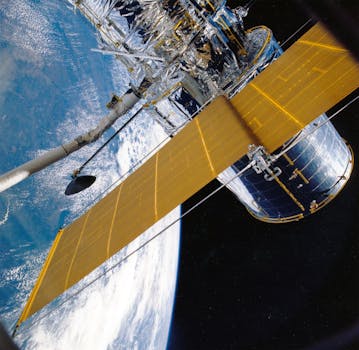From Geostationary to Low Earth Orbit: The Evolution of Satellite Telecommunications in 2023

From Geostationary to Low Earth Orbit: The Evolution of Satellite Telecommunications in 2023
Satellite Telecommunications

Satellite telecommunications has undergone significant transformations over the years, with a notable shift from geostationary to low Earth orbit satellites. This evolution has revolutionized the way we communicate, enabling faster, more reliable, and efficient data transfer. The focus keyword Satellite Telecommunications is at the forefront of this revolution, driving innovation and growth in the industry. In this article, we will delve into the history of satellite telecommunications, the differences between geostationary and low Earth orbit satellites, and the impact of this evolution on the telecommunications industry.
History of Satellite Telecommunications

The first satellite, Sputnik, was launched in 1957, marking the beginning of the space age. However, it wasn’t until the 1960s that the first commercial satellite, Intelsat 1, was launched, providing transatlantic communications. Since then, satellite technology has advanced significantly, with the introduction of geostationary satellites in the 1970s. Geostationary satellites, which orbit the Earth at an altitude of approximately 36,000 kilometers, offered a stable and reliable means of communication, enabling the transmission of data, voice, and video signals. However, geostationary satellites have limitations, including high latency, limited bandwidth, and high costs.
Low Earth Orbit Satellites

In recent years, there has been a significant shift towards low Earth orbit (LEO) satellites, which orbit the Earth at an altitude of approximately 160 to 2,000 kilometers. LEO satellites offer several advantages over geostationary satellites, including lower latency, higher bandwidth, and lower costs. LEO satellites are also more flexible, allowing for easier satellite deployment and replacement. Companies such as SpaceX, OneWeb, and Amazon’s Kuiper Systems are leading the charge in LEO satellite technology, with plans to launch thousands of satellites in the coming years. The impact of LEO satellites on the telecommunications industry will be significant, enabling faster, more reliable, and efficient data transfer, and bridging the digital divide in remote and underserved areas.
Impact on the Telecommunications Industry

The evolution of satellite telecommunications from geostationary to low Earth orbit satellites will have a profound impact on the telecommunications industry. With the increased use of LEO satellites, we can expect to see significant improvements in data transfer speeds, reduced latency, and increased bandwidth. This will enable the widespread adoption of emerging technologies such as 5G, IoT, and cloud computing. Additionally, LEO satellites will play a critical role in bridging the digital divide, providing internet access to remote and underserved areas, and enabling global connectivity. The satellite telecommunications industry is expected to grow significantly, with estimates suggesting that the global satellite market will reach $00 billion by 2025.
See more:




